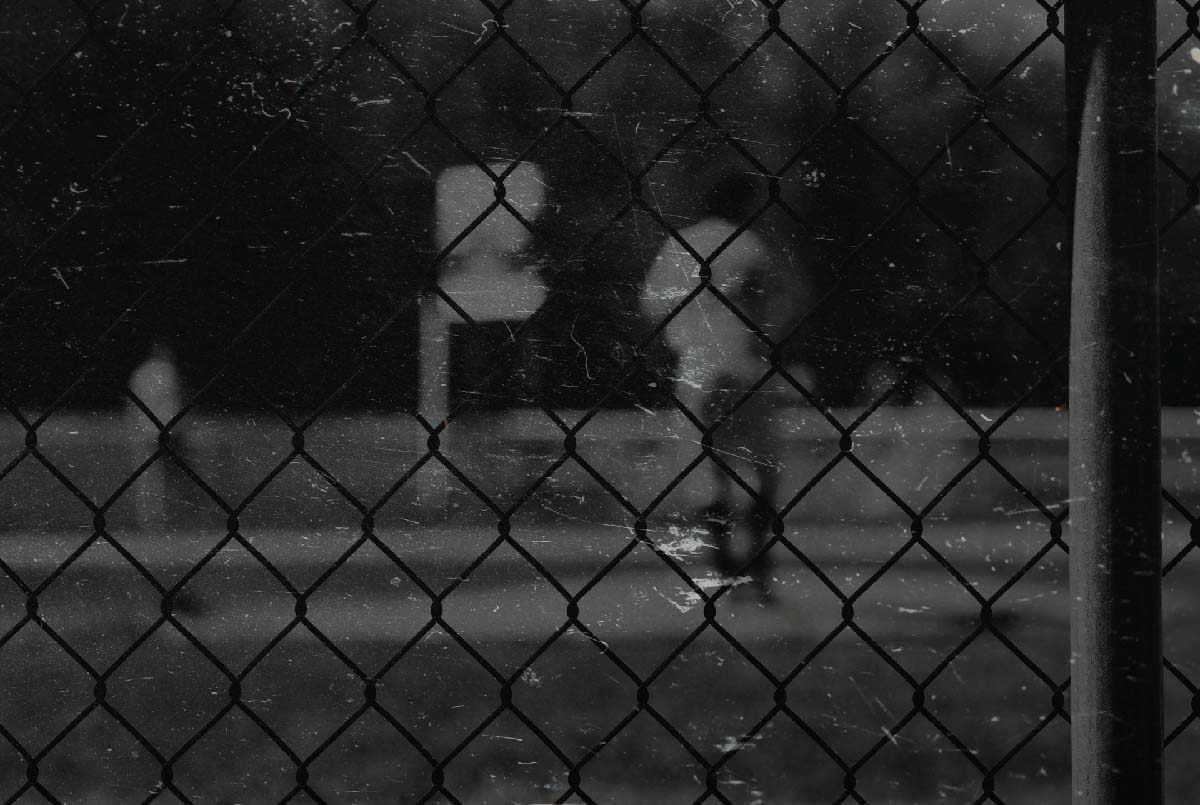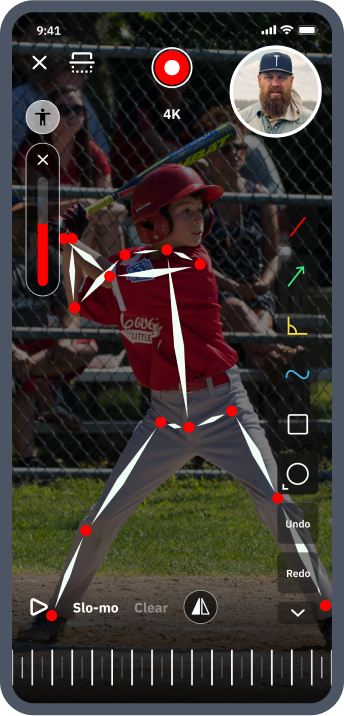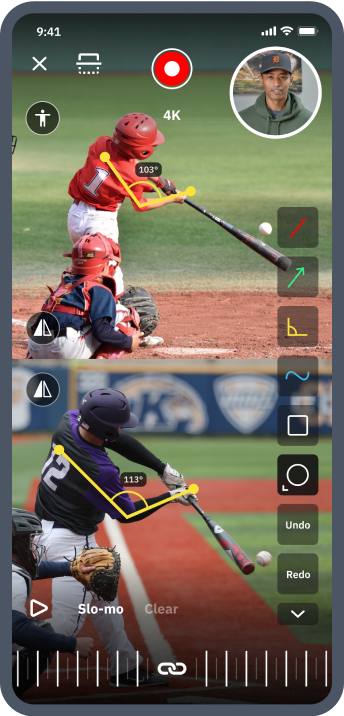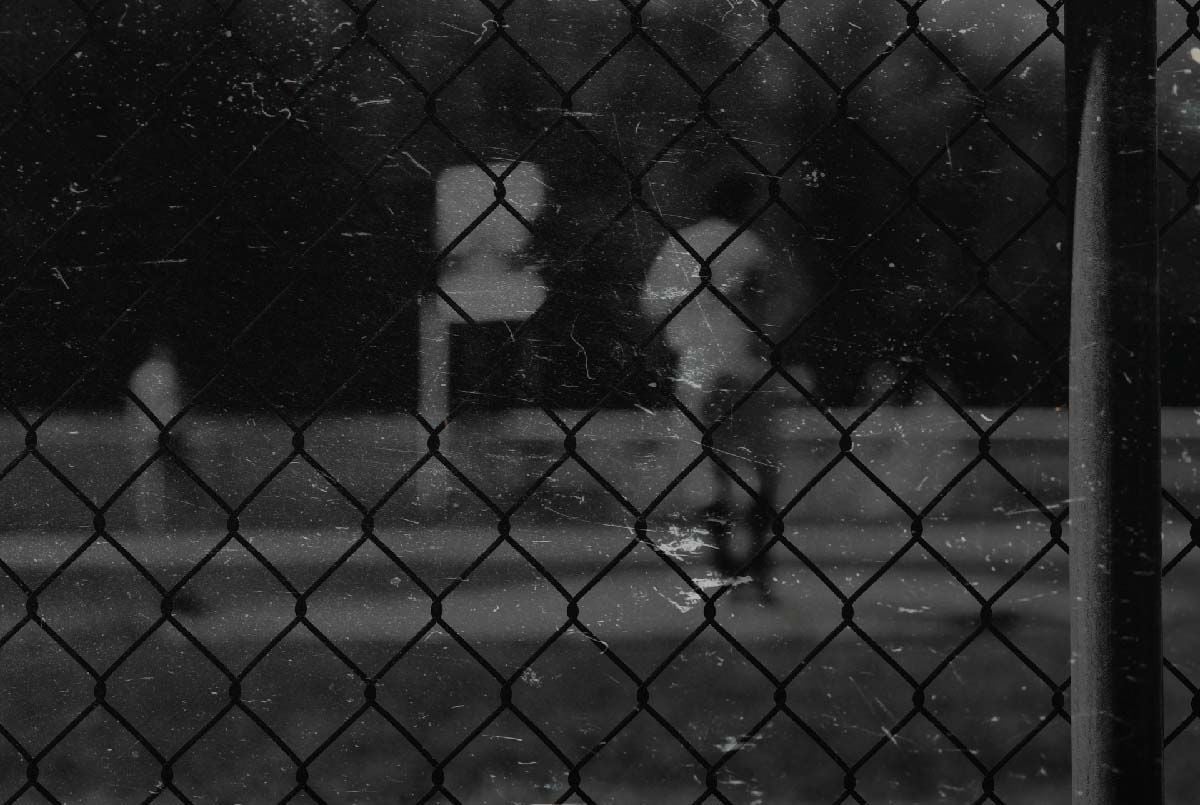The Individuality of Baseball and Softball Success: How Vision and Kinematics Studies Show No Two Great Hitters Are Alike

To be a good hitter, you copy the greats, right?
How much time did you spend as a kid watching and imitating the swings of pro ballplayers?
While you can definitely learn a lot by studying elite hitters, their success won’t be yours if all you do is mimic mechanics.
Studies of the interaction between visual perception and kinematics – we’ll define these in a bit – have shown that high-performing athletes may not necessarily have the same movement patterns.
This research reveals something important: no two great hitters are alike.

Visual-Motor Skills and Batting
Sports with what is called "high-skill striking performance," like baseball, softball, and cricket, require heightened visual and motor skills.
Swinging a bat so that you make contact with a ball traveling toward you at 90+ mph (or 70+ in softball) is a very refined motor skill.
Hitters must translate a wealth of visual information into complex movements to get their desired outcome – usually in under half a second.
Put simply, baseball and softball batters have little time to watch the pitcher, identify the pitch, decide to swing, and then actually swing with enough accuracy, along with physical and mental intention, to make meaningful contact.
Studies also show that athletes who perform striking movements achieve a high degree of what experts call motor equivalence.

What is motor equivalence?
According to the American Psychological Association, motor equivalence is “the ability to use different movements, produced by either the same or different parts of the body, to perform a task under different conditions.”
An example is the ability to write your name.
You can write your name with a pen on a piece of paper, of course. But you can also write your name using spray paint on a wall, finger-painting on a giant canvas, or moving your big toe around in the sand to form the letters.
Basically you can write your name onto just about any surface using any tool or method you wish.
Motor equivalence explains how a hitter can still make contact with pitches at various places within or outside of the strike zone – not to mention facing differently moving fastballs, changeups, curveballs, etc.
Also, no pitcher gives off the exact same visual cues. Each pitcher’s body composition, windup, arm slot, release, and the ball’s subsequent locations, not to mention the speed and spin of each pitch, may be different.
Yet, hitters can perceive these variations and make small adjustments to their swing in order to make effective contact.
This ability to alter coordinated motor movements to hit the ball under diverse circumstances is motor equivalence.

Evidence for motor equivalence in baseball
In a 2007 biomechanics study by Hiromu Katsumata, a group of college baseball players were fed balls by a pitching machine while standing on force plates. The plates measured their weight transfer as they swung at pitches of varying speeds.
The study unsurprisingly showed that these ballplayers were adjusting the timing of their swings’ weight transfers to compensate for differences in hitting fast versus slow pitches.
This study was supported by similar 2011 research conducted by Fortenbaugh, Fleisig, Onar-Thomas, and Asfour. They used a group of double-A Minor League baseball batters to show the same weight transfer variations in response to different pitch velocities.
Finally, a 2020 study by Rob Gray of Arizona State looking at data on college baseball hitters came to a similar conclusion stating:
These findings suggest that successful hitting does not involve producing the same, low-variability, pre- programmed swing for every pitch (i.e., producing an “ideal” swing every time). Instead, it involves developing functional variability to allow for a swing that takes advantage of the good variability in order to be adaptable to different pitches.
Interestingly, this final study also offered some powerful practical applications and suggestions for how ballplayers and professional coaches should approach training.
The study also provides further evidence for why developing bat speed is so important for ballplayers.
Despite the insights gained from all the studies cited above, they actively acknowledge a pretty important limitation. Gray himself sums it up nicely:
Recent evidence suggests that how the problem of movement coordination is solved can show large individual differences even when similar levels of performance outcomes are achieved.
Basically, they don’t specifically account for how different individual ballplayers can put up similar stats but go about achieving their in-game success psychically very differently.

Skill Group Comparison vs. Individual Comparison Studies
Most studies of vision and kinematics have tested groups of skilled performers against groups of unskilled or less skilled performers.
Below are some examples of these types of studies:
- Experienced surgeons performed a virtual laparoscopic task faster than a group of novice surgeons
- A group of safe drivers identified hazards more quickly than a group of unsafe drivers
- A group of expert karate athletes were able to anticipate an opponent’s attack and block more effectively than a group of near-expert karate athletes
Visual preceptor-motor skills are almost always studied in groups.
However, while these studies have proven that expert or higher-level performers have different coordination patterns than non-experts – and, of course they do – they also haven't shown variation between similarly-skilled individuals.

Why Are the Motor-Skill Patterns of Individuals Important?
Visual perception is only part of motor skills coordination, according to some experts.
The environment an individual is in and their interaction with it also plays a huge role in motor movements.
Other characteristics come into play as well:
- Biomechanics
- Emotions
- Psychological factors
- Task-specific constraints
According to a study by Sean Müller, John Brenton, Alasdair R. Dempsey, Allen G. Harbaugh, and Corinne Reid, success at the plate might not come from doing things exactly the way experts do it.
With their study of temporally occluded, which just means visually blocked, cricket batsmen, they wanted to probe into the individual differences of athletes in all striking sports – including, of course, baseball and softball.
The researchers stated:
Whilst skilled actions exhibit some stable characteristics, it also is apparent that skilled performers are not locked into rigidly stable solutions (coordination patterns), but can modulate their behaviors to achieve consistent performance outcome goals.
In other words, there’s more than one right way to hit a baseball or softball – even for experts, and even on a pitch by pitch basis.

Variability between baseball and softball hitters is a given
Great hitting coaches know that each player they work with has a:
- Differently composed body
- Different length arms and legs
- Different strength levels
- Different previously-ingrained mechanics and cues
- Different levels of hip, knee, or shoulder mobility
- Different emotional responses
- Different mental tendencies
- Different preferences for how to be spoken to
- Different preferred learning styles
- Different natural energy levels
- Different stage in their development for all of these things
In response to this barrage of “Different's,” great hitting coaches try to gather unique client information through many intentional and intuitive means before giving their advice.
This list of differences, by the way, is still not fully exhaustive.
Physical, mental, and emotional uniqueness is a given between people, and this uniqueness extends to ballplayers.
But, the point is that even the best instructor is mostly a guide and ally for the hitter’s own self-mastery.
The treacherous terrain that stretches in front of a hitter’s developmental journey is absolutely helped by having such a professional guide – like a sherpa guiding climbers up Everest.

What Does Individuality of Vision and Kinematics Mean for Hitters?
If you’re a hitter, how does this research impact you?
It implies that to be a top-level hitter, you have to understand your own body to an elite degree.
Up to a certain point, you do need the right basic form. Hitting requires precise mechanics, and that’s still something you should try to master if you want to be great.
But once you’ve got the basic form, much of your performance as a hitter will come down to approach, decision-making, and small adjustments.
You’ll, of course, need to know how to grip your bat, initiate your hands, and shift your weight to respond to an incoming pitch.
But you must also be able to respond to environmental constraints, like playing in early March when it’s almost freezing out.
Additionally, you must be able to overcome emotional and psychological barriers. Hitting is 90 percent mental, right Yogi?
The thoughts in your head, stress, anxiety, or mental distractions all factor into your swing nearly as much as visual perception does.
When you understand how your body responds, you can learn to make those split-second adjustments needed to find success in the batter’s box.
Unlock your ballplayer’s full potential
Find the perfect vetted coach to build a solid foundation or take your player's skills to new heights.
Download the free app

About the Author
Courtney Withrow
Professional Writer
Originally from the U.S., Courtney is a Brussels-based freelance writer with a Master’s degree in International Relations. She grew up playing softball and still loves the game.

